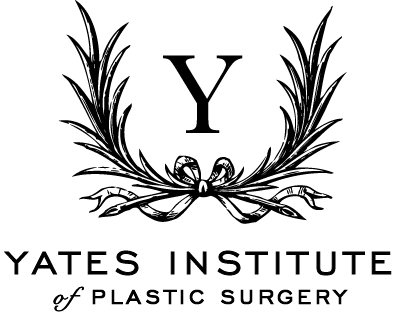5 Frequently Asked Questions about Breast Augmentation
The breast augmentation surgery performed with breast implants is a major plastic surgery intervention that can considerably improve the body's overall aspect. After undergoing the breast enhancement procedure, the breasts' volume is increased, the patient's silhouette is balanced and with better proportions. As a result, most patients mention increased self-esteem and better social, professional, and personal relationships after the procedure is performed.
If you are considering undergoing breast augmentation surgery, it's important to know all the procedure details before scheduling the intervention. And the first step is to find answers to some very popular questions.
Top 5 frequently asked questions about breast augmentation with implants
The breast augmentation surgery performed with breast implants is a major plastic surgery intervention that can considerably improve the body's overall aspect. After undergoing the breast enhancement procedure, the breasts' volume is increased, the patient's silhouette is balanced and with better proportions. As a result, most patients mention increased self-esteem and better social, professional, and personal relationships after the procedure is performed.
If you are considering undergoing breast augmentation surgery, it's important to know all the procedure details before scheduling the intervention. And the first step is to find answers to some very popular questions.
Top 5 frequently asked questions about breast augmentation with implants
1. Am I a good candidate for the surgery?
Women resorting to plastic surgery to enhance the breasts' aspect want to correct certain imperfections present in the area. Some patients are interested in balancing the size of the breasts (one breast is considerably bigger compared to the other); others want to regain the natural volume of the breasts lost after pregnancy, childbirth, breastfeeding, or weight loss.
The breast augmentation surgery is recommended for you if:
Your breasts are too small compared to the rest of your anatomy;
You lost weight and with it the shape and volume of the breasts;
Your breasts look empty or deflated;
There are significant differences between the volumes of the breasts.
However, this is not enough to make you an eligible candidate for the procedure. During the initial consultation, the plastic surgeon will need to assess other factors such as:
The breasts are fully developed;
You have good reasons to undergo the procedure;
You are mature enough to understand the potential risks and complications;
Your health condition;
You have realistic expectations from the surgery.
2. How is breast augmentation surgery performed?
The plastic surgeon chooses a surgical technique depending on the patient's anatomical characteristics and the desired results. The incisions and implant placement are important decisions that you need to discuss with the surgeon performing the procedure.
Breast augmentation surgery incisions
The breast augmentation surgery entails inserting implants in pockets created inside the breasts to increase the breasts' overall volume. To be able to do this, the plastic surgeon needs to make incisions. This means that the first step of the procedure is making the incisions. There are three different surgical approaches:
- Incisions are in the inframammary fold
- Incisions are around the areola's edge
- Incisions are at the level of the axilla
Each type of incision is recommended for certain patients, and it is associated with advantages and disadvantages. For example, the periareolar incision is barely visible as it is positioned where the areola meets the surrounding skin. However, we can only use it to insert silicone implants that are not overly big or saline solution implants filled after they are inserted into the breasts.
Some patients tend to believe that the incisions at the level of the axilla are the best possible choice for a breast enhancement procedure as there are no marks or scars left at the level of the breasts. However, this type of incision allows little visibility (it's also called "the blind method"), and we can't insert implants that are too big. At the same time, the risk of asymmetries is higher when this technique is preferred.
The most commonly used technique entails an incision at the level of the inframammary fold.
Subglandular vs. submuscular breast implant placement
If you did even a minimum amount of research, you probably know already that the breast implant can be positioned either under the mammary gland or under the chest muscles. The plastic surgeon can also recommend an "in-between" placement called a dual-plane – this means that the upper part of the implant is covered by the pectoral muscle, while only the breast tissues cover the lower part.
The implants' placement is dictated by the aspect of the breast tissues, the type of implants (round or tear-shaped), the volume and projection of the implant, and the desires of the patient.
3. How can I find out what implants are right for me?
Choosing the size and type of implant is one of the most important aspects of breast augmentation surgery. Each patient is different and has different needs. This means that there is no such thing as a one size fits all when it comes to breast implants.
During the consultation with the plastic surgeon, you will be asked to talk about your desires and the results you expect to achieve with the surgery. Years ago, you'd have to bring pictures of celebrities with the shape and size of breasts you wanted. The plastic surgeon would have also shown you pictures with patients undergoing the same procedure as you. However, this is no longer necessary.
Nowadays, you can find out exactly what are the perfect implants for you in a matter of a few minutes with the help of a breast visualization tool. If you are in Fort Lauderdale, schedule a consultation with Dr. Essie Yates, a board-certified plastic surgeon to try out the virtual mirror that allows you to see the surgery results before the intervention is scheduled. At the Yates Institute for Plastic Surgery, we use Illusio Surgery Visualization – a tool that gives you a glimpse of yourself in the future.
4. What complications can occur after breast implants surgery?
Patients need to understand that no surgical intervention is risk-free, not even the non-surgical procedures. But when the procedure is performed by a board-certified plastic surgeon in an accredited medical facility, these risks are much reduced.
To keep away from complications that can occur after any type of surgery such as blood and fluid accumulation, infections, skin necrosis, wound opening, and others, the patient needs to follow the plastic surgeon's recommendations.
However, when you are undergoing the breast augmentation procedure early in life, you should be prepared for a revision surgery later on to either replace the implants with new ones, lift the breasts and so on.
5. When can I go back to work?
In most cases, the patient can return to work within a week or two after the breast augmentation surgery, if the daily activity doesn't entail a great deal of physical effort. Lifting heavy things and stretchy the arms should be avoided for a few weeks after the intervention was performed to avoid the rupture of the sutures.
Generally speaking, after breast implants surgery with a subglandular placement, the recovery process is shorter and associated with less pain than when the submuscular placement was preferred.
Patients can resume sports and workouts about a month or two after the procedure was performed, depending on how the recovery process is going.
Final words
The breast augmentation procedure is one of the most sought-after plastic surgery interventions in the United States and all over the world. The procedure can help you get the breasts of your dreams in a matter of hours. Keep in mind that you need to prepare for the surgery and discuss all the details with the plastic surgeon, just to keep on the safe side.


